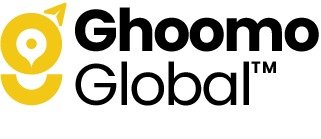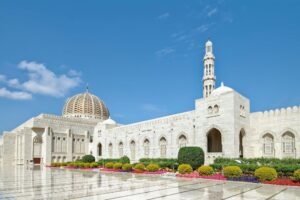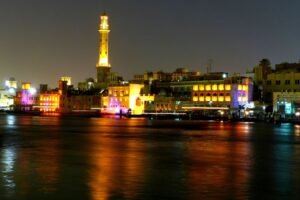Introduction:
Indonesia, an amazing archipelago with a prosperous cultural heritage, additionally has linguistic variability. Its vast population, spread throughout hundreds of islands, speaks a variety of languages, every reflecting the special culture and traditions. From the official language Bahasa Indonesia to the combination of regional tongues, understanding the linguistic variability of Indonesia is essential to understanding its cultural complexity.
This blog delves into the exciting world of Indonesian languages, exploring the official language, the most broadly spoken regional tongues, and the affect of foreign languages on the country’s linguistic variation. By understanding these languages, we can understand its cultural variations and historic traits that have fashioned Indonesia’s identity.

The Official Languages Spoken in Indonesia

The official language of the Republic of Indonesia is Bahasa Indonesia, normally regarded as the Indonesian language. This language has its roots in Malay, which is a member of the Austronesian language family. Notably, Malay are reputable languages in Malaysia, Singapore, and Brunei Darussalam.
In addition to Malay, the Indonesian culture offers some other local languages, such as Javanese, Minangkabau, and Sundanese. The language has additionally gotten phrases from foreign languages like English, Arabic, Dutch, Sanskrit, and Portuguese.
Bahasa Indonesia holds a top position in education, administration, and media, making it a language spoken by every Indonesian. For vacationers, to talk with locals, learning Bahasa Indonesia is essential, as it is no longer only widely used but additionally viewed easier in contrast to different regional languages.
Languages Spoken in Indonesia: Local Languages
Javanese language

The Javanese language serves as the predominant language in Japan and central Java, Indonesia, being the mother tongue of over ninety-eight million individuals, constituting about 42% of the nation’s population. Additionally, some areas in Malaysia and Singapore have communities where Javanese is spoken as the local language.
This language is written using Arabic, Javanese, and Latin scripts and encompasses three fundamental parts primarily based on geographic locations: Central Javanese, Eastern Javanese, and Western Javanese. The great impact on Javanese is obvious, as the majority of Indonesia’s presidents, i.e., all seven of them, have been notably Javanese speakers, contributing drastically to the evolution of Bahasa Indonesia.
Sanskrit holds a profound share over the Javanese language, with around 25% of phrases in Old Javanese literary works originating from Sanskrit. Additionally, Dutch and Malay have left their mark on the language, similarly shaping its linguistic landscape.
Maduranese language
Madurese serves as a predominant language spoken by several people in Indonesia, especially on Madura Island, Japanese Java Island, and the Kangean and Sapudi islands. Approximately eight to thirteen million people, constituting over 5% of Indonesia’s population, are estimated to communicate Madurese.
Linguistically, the Malayo-Sumbawan language, i.e., well-known, shows a greater similarity to Balinese than to different Javanese scripts.
Sundanese language

Sundanese, a Malayo-Polynesian language, is substantially spoken in Western Java, Lampung, Banten, and Jakarta. With about 14 million native speakers, it became popular and offers its different types; some are strongly influenced by the Javanese. Furthermore, Sundanese possesses its own writing system, derived from ancient Sundanese and influenced by using the Pallava script from South India.
Historically, Sundanese contains six language variations corresponding to a number of tiers of politeness and respect. However, in 1988, it underwent simplification, consolidating into two levels: the respectful ‘basa hormat’ and the extra-informed ‘basa Loma.’ It’s essential to note the existence of the lowest level, ‘cohag,’ reserved for verbal exchange with animals or expressing excessive anger to humans.
Minangkabau language
The Minangkabau language, a type of Malay, is spoken by a population of more than 5 million people in Indonesia, especially in West Sumatera and the Sembilan nation in Malaysia. While some linguists categorize it as a non-standard type of Malay and an alternative to a wonderful language, it stays the most extensively used language in the region of West Sumatera.
Spoken in various areas, including West Sumatra, western Riau, South Aceh Regency, Bengkulu, and Jambi, the Minangkabau language continues to be spread by the peoples who have migrated from these areas to other cities in Indonesia.
Bahasa Bugis
The formally identified and broadly used important language in Indonesia is Bahasa Indonesia, among various communities in the country. It holds its role in administration, media, the judicial system, and formal education, with almost all Indonesian residents trained in speaking in Bahasa Indonesia.
While Bahasa is recounted as a local language and regularly referred to as a second language. Despite being a countrywide language that promotes unity, locals include Bahasa into their native languages. This language is frequent all throughout the country, giving upward slope to use the Bahasa in a number of areas of densely populated islands.
Belonging to the Austronesian language family, Bahasa Indonesia shares linguistic roots with different languages spoken in Indonesia, such as Javanese and Regeng. Originating from the Riau Malay language at some stage in the nationalist movement in the 1940s, Bahasa Indonesia has evolved into a standardized form and is now serving as the important regional language.
Languages Spoken in Indonesia: Foreign Languages

Indonesia not only offers variety of local languages but additionally encompasses various foreign languages via immigration and colonization.
Dutch

The Dutch East India Company held influence over parts of Indonesia for a long period, i.e., extending over three centuries. While colonial rule ended in the mid-1900s, remnants of the Dutch language persist in Indonesia. Although very less spoken, some Indonesians can fluently talk in Dutch.
English

English has a wide presence in Indonesia, with some specialists thinking about it as a shared language of communication among tourists and others categorizing it as a foreign language. Regardless, English is gaining popularity in the Indonesian culture and the surrounding region.
Other Foreign Languages

Apart from their local languages, Indonesians additionally communicate a number of foreign languages. Mandarin, Arabic, Japanese, Korean, French, and German are among the famous languages spoken in Indonesia. These languages are taught at specific institutions, with a primary focus on the local languages to be used in Indonesia.
Conclusion
Indonesia’s linguistic panorama is a testimony to its wealthy cultural heritage and historic interactions with different nations. From the official language, Bahasa Indonesia, to the various other local languages and the impact of foreign interaction, the country’s linguistic varieties got their own special identity.
As we proceed to discover and recognize the beauty of Indonesian languages, we can understand its higher cultural variety and the numerous communities that reside in this culture. By understanding the linguistic richness of Indonesia, we can better connect with people and make our trip exciting with long-lasting memories.











